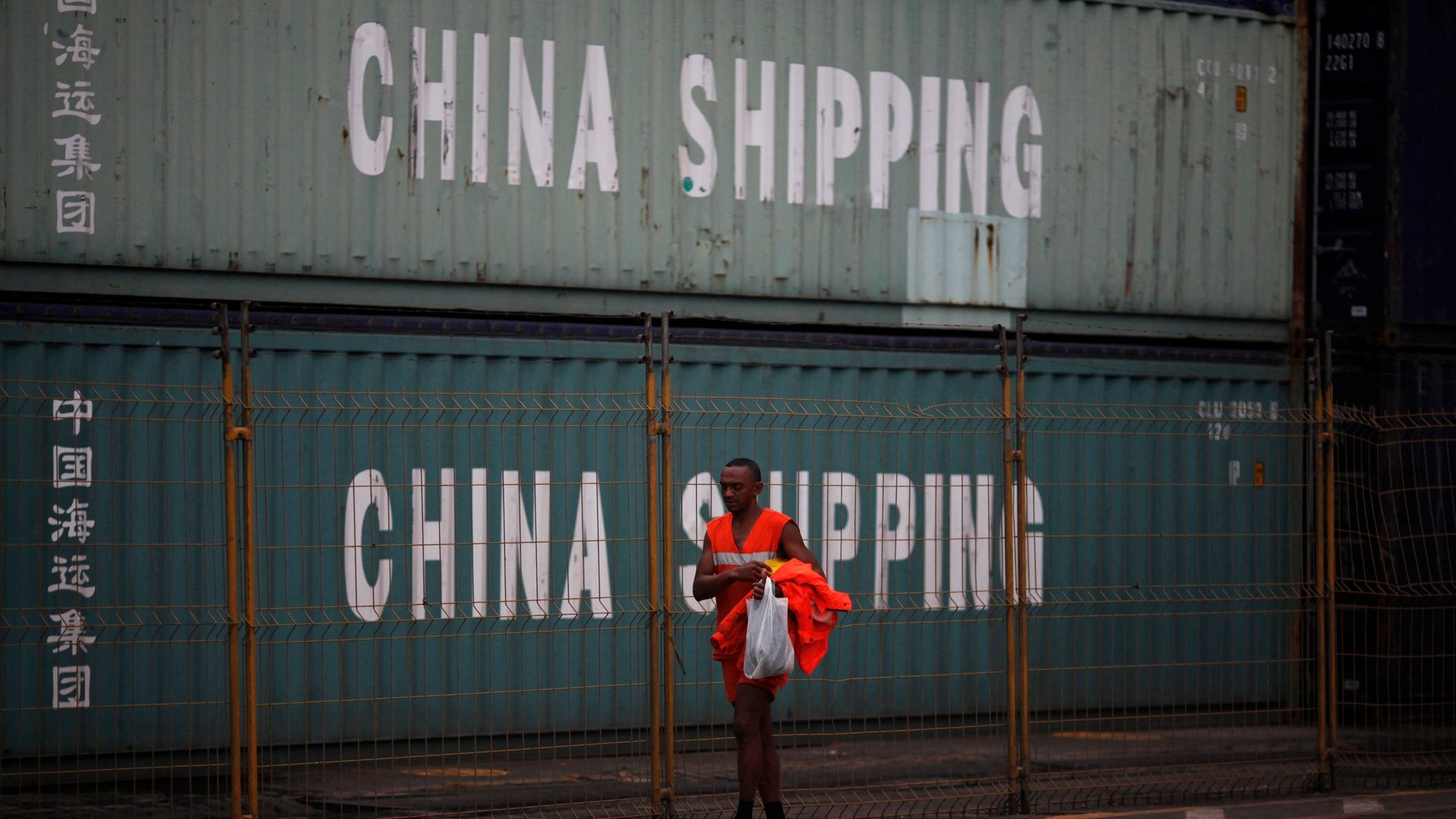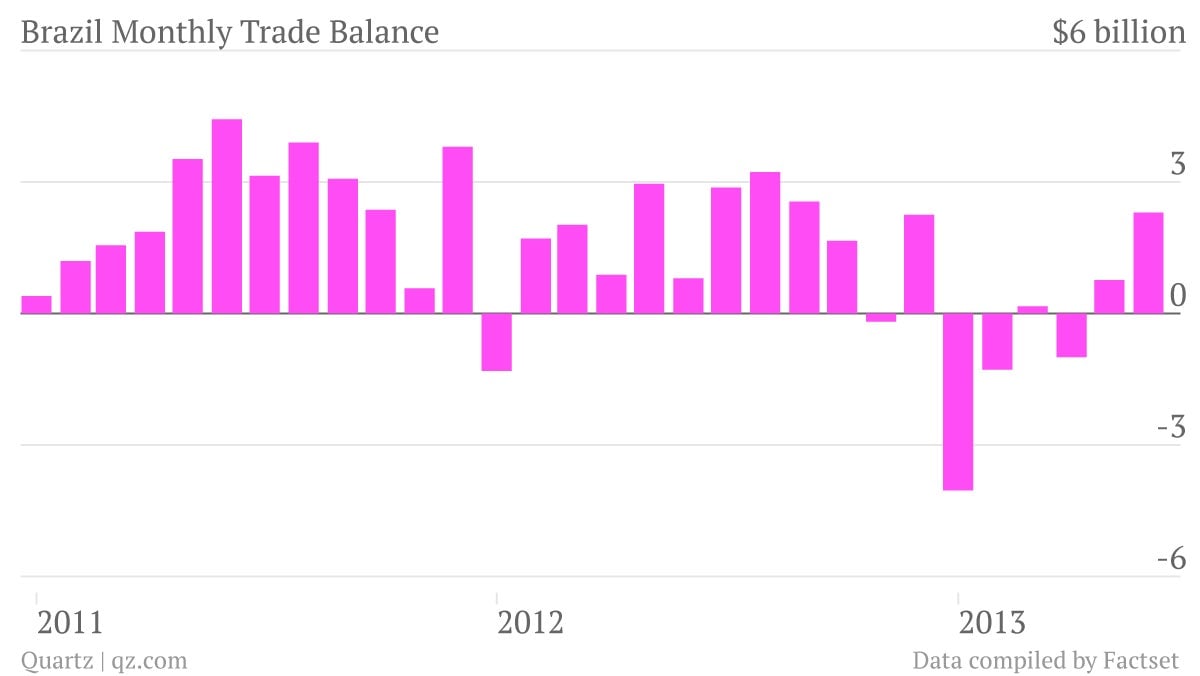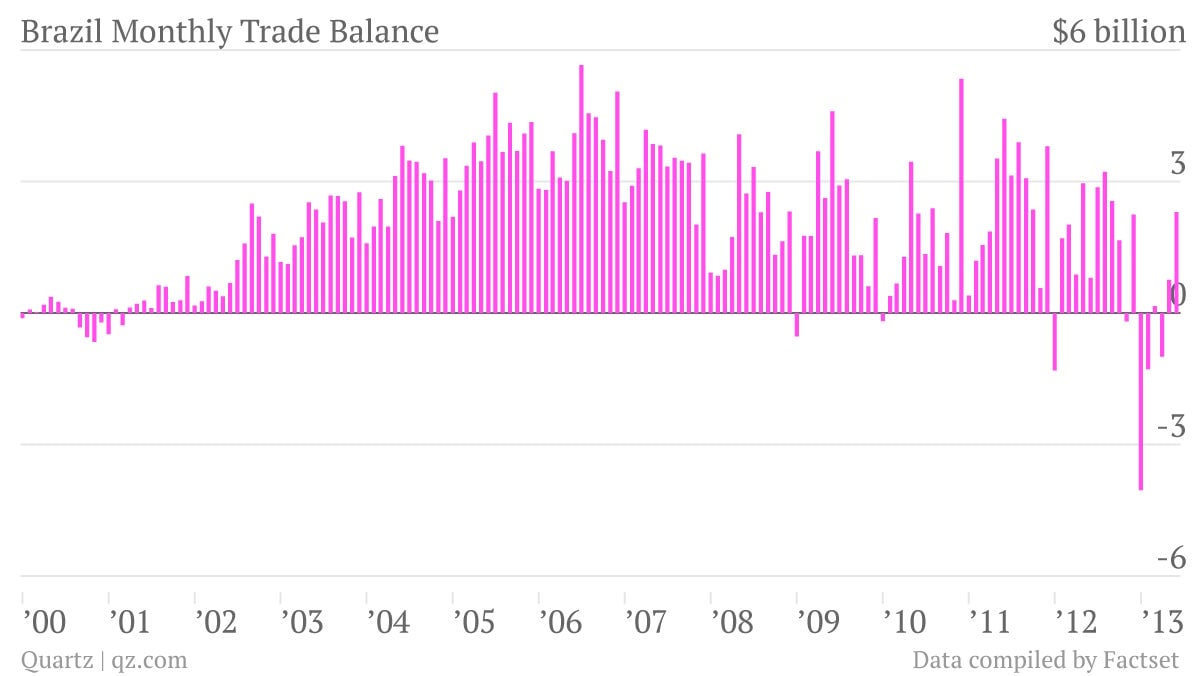Brazil is on track to post an annual trade deficit for the first time in 13 years
Last year, Brazil posted its worst trade performance in a decade—a $19.43 billion trade surplus, down from a nearly $30 billion surplus the previous year. But this year is looking far worse; the country has eliminated its surplus completely and gone into deficit. In January, Brazil posted an over $4 billion deficit, its largest monthly deficit in history. And at present, its half-year deficit of $3 billion is its worst in almost 20 years.


Last year, Brazil posted its worst trade performance in a decade—a $19.43 billion trade surplus, down from a nearly $30 billion surplus the previous year. But this year is looking far worse; the country has eliminated its surplus completely and gone into deficit. In January, Brazil posted an over $4 billion deficit, its largest monthly deficit in history. And at present, its half-year deficit of $3 billion is its worst in almost 20 years.

Brazil’s GDP growth has already slowed to around 2%. According to a statement issued by the Brazilian Foreign Trade Association (Aeb), Brazil is expected to post its first full-year trade deficit since 2000. This comes after Aeb announced a projected trade surplus of nearly $15 billion for 2013 in December. Have a look:

Part of the problem is that Brazilian imports are picking up too fast. Favorable exchange rates have made foreign goods more attractive, and Brazil has been purchasing more and more of its oil from abroad.
A bigger problem is likely dwindling exports. While imports are expected to rise 4.2% for the year, exports are slated to drop 5%.
That’s partly the result of slowing global demand during the economic downturn and drops in raw material prices. A decline in foreign sales of Brazilian oil has also contributed. Brazil’s unhealthy dependence on a select few commodities, like iron, crude oil, soy and sugar, hasn’t helped. Soy exports have failed to match record harvests, and iron exports are falling, while prices have plunged near 25%.

Brazil’s dependence on lagging China is another problem. Back in 2000, Brazil only shipped some 2% of its goods to China, but it now sends some 17% of its goods to China, its largest trade partner and a major importer of Brazil’s largest export, iron ore. It’s no coincidence that a $4 billion trade deficit in January coincided with a trough in Brazil’s exports to China.